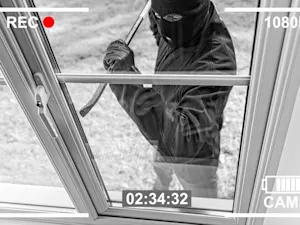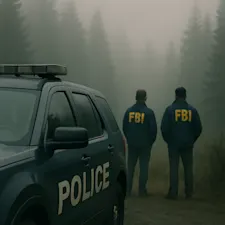
California Man Dies After Hospital Sent Him Home
Rodrigo "Rigo" Becerra had a goal — 100 days of skiing before his 27th birthday.
He nearly made it.
By late February, he had hit day 93, sharing his progress online with the sunny slopes of Mammoth Mountain behind him. Just days later, according to SFGate, Becerra sent a chilling text to his sister — "I've been feeling like death." Less than 48 hours later, he was gone.
A Rare and Fatal Virus Claims Another Life
Becerra's sudden death on March 6 marked the third confirmed hantavirus fatality in Mono County this year.
Local health officials called it "tragic and alarming," according to Mono County's government website, especially since hantavirus infections are rare — and usually more common in late spring or summer.
The 26-year-old lived and worked in Mammoth Lakes, a small mountain town in California's Eastern Sierra. He had moved there in 2022 from Wisconsin, drawn by the ski culture and scenic beauty. His loved ones say he was the happiest he'd ever been.
But the virus that claimed his life is as deadly as it is elusive. Carried by deer mice, hantavirus is primarily spread through their urine, saliva, or droppings. Most human infections occur when contaminated particles become airborne and are inhaled. The infection can lead to hantavirus pulmonary syndrome (HPS), a disease that aggressively attacks the lungs and has a fatality rate of about 30%.
What Happened to Rodrigo Becerra?
On March 5, Becerra sought treatment at Mammoth Hospital after feeling unwell for days. Despite exhibiting flu-like symptoms — hallmarks of the early stages of hantavirus — he was sent home with antibiotics. The next morning, he was found convulsing in his apartment and died shortly after. His cause of death is still officially listed as "pending pathology in toxicology," according to the New York Post, but Mono County confirmed it as a hantavirus-related case.
An investigation by Mono County health officials found no signs of rodent activity in Becerra's home. However, evidence of deer mice was discovered at his workplace, the Mammoth Mountain Inn, where he worked as a bellhop. While officials did not deem the droppings there a significant threat to health, the overlap between all three victims' workplaces and rodent presence is raising concerns.
Why Are Cases Climbing?
Hantavirus cases are typically few and far between — only 864 have been documented in the US since 1993, according to the Centers for Disease Control and Prevention. Yet Mono County now holds the state record with 27 cases since 1993, and having three fatalities this early in the year is highly unusual.
Public health officials suspect an increase in the local deer mouse population may be driving the spike. These rodents often enter indoor spaces during colder months, raising the risk of accidental exposure — particularly in employee housing, ski lodges, and older buildings. Rodent activity has now been confirmed at the workplaces of all three victims. According to the New York Post, a Mono County Public Health spokesperson said, "But in no case did they (investigators) find a gross infestation, a situation that would pose an obvious health risk."
That nuance matters — because the virus doesn't require a massive outbreak of mice to infect a person. Sometimes, just a single exposure is enough.
Why Detection Is So Difficult
One of the greatest dangers of hantavirus is its ability to mimic less deadly illnesses. In its early stages, HPS presents with common symptoms such as fatigue, fever, muscle aches, and nausea. Only later does it progress to severe respiratory issues, often too late for effective intervention.
There is no specific cure for hantavirus. Supportive ICU care — oxygen, fluids, cardiac monitoring — is the best treatment. But early detection is critical. And therein lies the problem.
Testing for hantavirus is not widely available in local hospitals. Samples must be sent to state labs, which can take three to five days for results. Both Becerra and another victim visited Mammoth Hospital before their deaths. Both were discharged with antibiotics. Neither survived.
The hospital now says it is working with experts to develop a more robust screening protocol. According to a county spokesperson, new guidance may help clinicians better identify HPS cases early, giving patients a better chance at survival.
How You Can Stay Safe
Health officials issued prevention guidelines urging residents and visitors to take precautions:
- Avoid vacuuming or sweeping rodent droppings, as this can aerosolize the virus.
- Air out spaces for at least 30 minutes before cleaning.
- Use disinfectant or a bleach solution on any areas that may be contaminated.
- Wear gloves and an N-95 or higher-grade mask while cleaning.
- Seal up homes to block rodent entry points.
And if you're ever in doubt — especially if you're experiencing severe flu-like symptoms — don't brush it off. Ask your doctor if hantavirus could be the cause. It might be rare, but as the recent deaths prove, it's not rare enough.
A Family's Loss, A Community's Wake-Up Call
Rodrigo Becerra's family has expressed frustration at the handling of his care but hasn't placed blame. Instead, they've turned their grief into a message, urging everyone to be aware, act fast, and never assume you're safe just because you can't see a mouse.
References: 'Tragic and alarming': Mice droppings found at Calif. hotel after employee dies from hantavirus | Third Hantavirus-Related Death Confirmed in Mono County | Hotel employee, 26, dies of rare rat-linked virus that killed Gene Hackman's wife: report
























